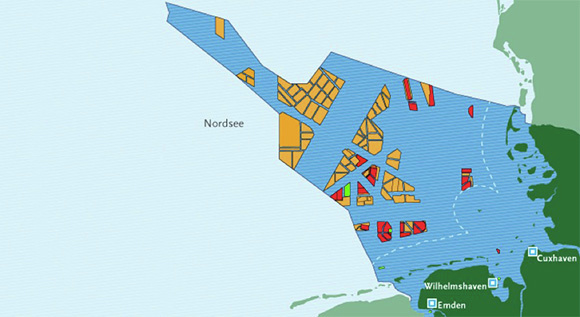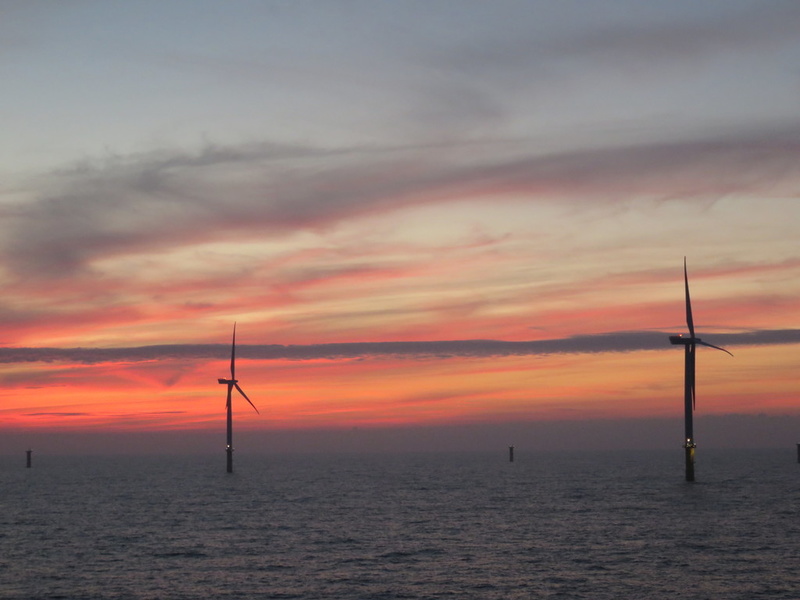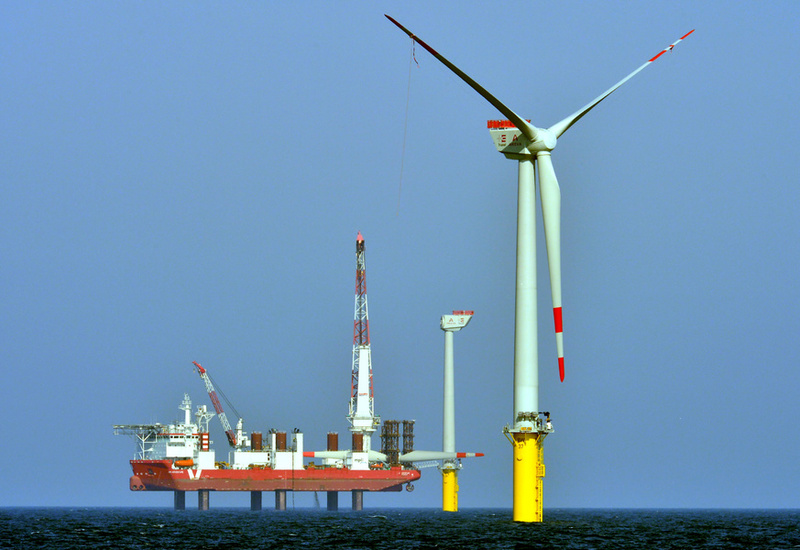News Release from windfair.net
Wind Industry Profile of
Record Year for Offshore Wind in Germany
Germany thus has a nominal capacity of 3,041 MW out at sea. According to AG Energiebilanzen more than 8 terawatt-hours of electricity were produced offshore in 2015. This corresponds to the electricity needs of more than 2 million households, or about 1.4 percent of gross power in Germany.
However, the offshore industry watches this record with mixed feelings. There is agreement that these high numbers are a unique occurrence mainly due to catch-up effects: delays in the completion of offshore grid connections which had paralyzed the expansion repeatedly since 2013 were finally eliminated last year. So the impression of a construction boom was surfacing. But in reality many of the parks had already been in construction for quite a while and could only be connected last year.
At the end of April e.g. offshore wind farm Dan Tysk (288 MW) in the German North Sea was officially connected to the grid. In September the offshore projects Butendiek (288 MW), Trianel wind farm off Borkum (200 MW) and Global Tech I with 80 turbines and a total capacity of 400 megawatts have been inaugurated also in the North Sea. EnBW Baltic 2 (288 MW) in the Baltic Sea followed the same month.

Wind farms in the German North Sea (Image: BMWi)
Currently there are 11 wind farms in test operation in the German North Sea. In case that all additional requirements will be fulfilled the parks will receive their final operating approval. From an economic perspective, there is, however, no difference between a test operation and a holding operation after release because the electricity fed into the grid is already paid regularly, according to BSH.
With the apparent construction boom at sea, a change in the areas of work came along for the federal authorities: In the past, the BSH was primarily responsible for granting of building permits, but last year only one permit was granted. Instead tasks have changed in recent months, especially towards construction site supervision to ensure everything is in compliance with statutory provisions. The focus offshore lies especially on environmental protection, because construction noise disturbs the delicate flora and fauna in the oceans.
In German oceans it is forbidden to exceed 160 decibels of sound emissions during construction. Dr. Bernd Brügge, head of oceanography at the BSH, however, emphasizes the technical progress of the recent past: “Yes, the upper limit of 160 decibels is met unless technical problems occur during construction. But overall, the measures work fine.” There are several methods in use such as Big Bubble Curtains to curb the noise during pile driving of the foundations.

Offshore Wind Farm Butendiek (Photo: wpd)
Basically, an increase in numbers of species can be observed in the areas of offshore wind farms. As fishing in the parks is prohibited and the foundations of the turbines are used as artificial reefs, a lot of animals feel comfortable there. It is still too early to give out exact numbers though, but Brügge stresses that monitoring of these developments is and will be accompanied scientifically by the BSH.
Construction of around 700 megawatts for 2016 is predicted by the industry. However, changes in the EEG provide some concern for project planners. As presented in the recently published report “Status of Offshore Wind Energy in Germany” by Arbeitsgemeinschaft Offshore Wind Energy (AGOW), German Wind Energy Association (BWE), Stiftung OFFSHORE WIND ENERGY, VDMA Power Systems and Wind Energy Agency WAB, it is pointed out that a future tendering system design will be crucial, especially during transition and beginning up to the mid-2020s. It must be designed with special attention to volume, frequency and duration. To do so it is necessary to define a transitional period of at least four years and hold more than just one tender during this time.
A problem in the design of a future tender system will be the threatened withdrawals of already issued building permits without adequate compensation. This would question legal certainty for already developed projects or severely restrict planning reliability for future investments. Bernd Brügge sees problems coming up there: “Unfortunately, in the future we are likely to have to deal with legal disputes.” A topic the BSG would rather not have to deal with.
To avoid future fluctuations in the development of offshore wind energy with phases of stops and record years like 2015, the offshore grid development plan (O-NEP) must also be taken into account at an early stage. The Federal Ministry of Economy and Energy (BMWi) called for an interim target of 11,000 megawatts in 2025 defined in the 2016 EEG. This would mean an annual expansion of nearly 700 megawatts. However, only a continuous annual expansion of at least 900 megawatts from 2021 onwards could form the basis to reduce the cost of offshore wind energy, secure value creation and industrial production in Germany and make an effective contribution to the security of energy supply in the long term, according to the industry.

Trianel Wind Farm Borkum (Photo: Trianel)
The 2015 record already shows that there will be future problems with the offshore lid, because offshore wind energy today has already reached around 50 percent of the expansion target of 6,500 MW for 2020. To enable authorities, associations and the offshore industry itself to be able to concentrate on their actual work in the future, a further change of the EEG is thus inevitable.
- Author:
- Katrin Radtke
- Email:
- kr@windmesse.de

